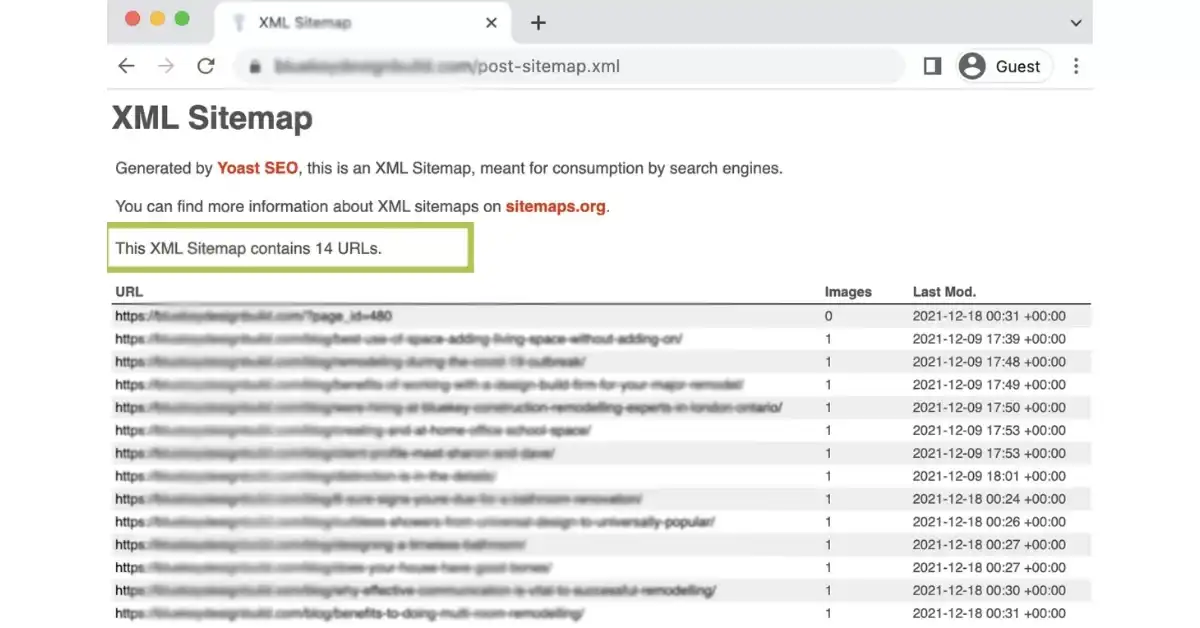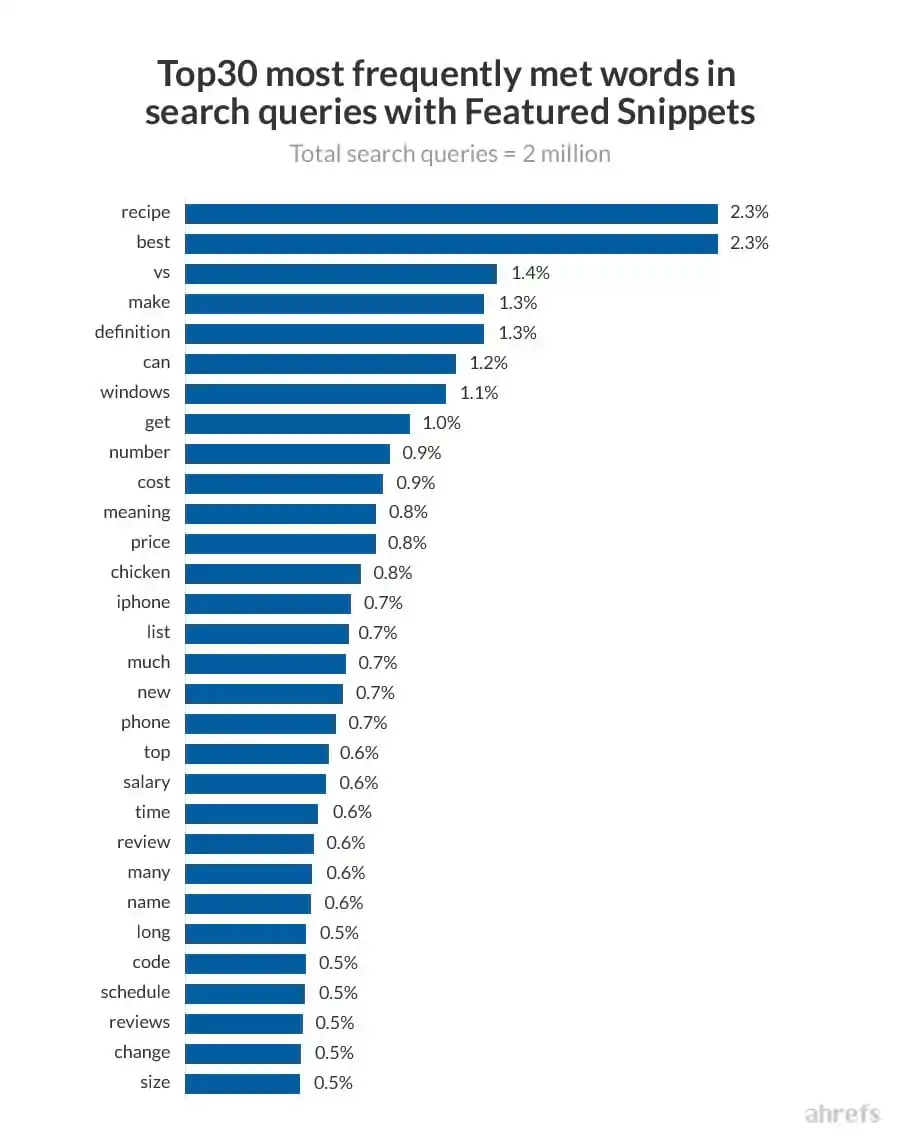
What are the benefits of featured snippets on search engines?
How can you optimize your content to get featured on SERP?
GIANT’s SEO team is going to walk you through the concept of featured snippets with a real-life
case study of how we have successfully created one for our website.

What is a featured snippet?
A featured snippet is a summary of an answer to a user’s question that is normally displayed at the very top of the search engine results page (SERP).
The benefits of featured snippets?
There are many benefits of featured snippets, including an increase in website visibility and click-through rate due to being at the top position and occupying a larger space on the search result pages. It can also boost the overall SEO of a website if done properly.
If that didn’t convince you to try and get a featured snippet, we’ve got more details that hopefully will.
1. MOBILE SERPS’ REAL-ESTATE
According to SEM Rush, they have tested 10,000 SERPs across mobile devices and found that “featured snippets tend to take up 50% or more of the screen”.
2. BRAND AWARENESS AND VISIBILITY
The most obvious benefit of having a featured snippet is that your website’s visibility and brand awareness will increase. This is because your website will be featured prominently on Google’s SERP, which gets a lot of traffic.
3. IMPROVE CLICK-THROUGH RATES (CTRS)
Featured snippets have been shown to increase CTRs. This is because featured snippet results are more eye-catching than regular organic results.
In 2023, Ahrefs’ study showed that CTR to the featured snippet depends on the search intent behind the query. A search that’s likely to result in a click would significantly boost CTR by 35.1% according to Search Engine Watch.
4. MORE VOICE SEARCH OPPORTUNITIES
Featured snippets are especially important for voice search. This is because featured snippets are read aloud by virtual assistants such as Siri, Google Assistant, and Cortana. And if the users want to get more information, they can directly access your website, which increases traffic.
5. SEO PERFORMANCE BOOST
When your website has a higher CTR, it will indirectly increase your page authority and boost your ranking. Even though this statement is still debated in the industry, there are various studies that found that CTR is very effective when it comes to boosting rankings. There have been many CTR manipulation services that have popped up over the past few years to boost a website’s CTR for higher rankings, which we don’t recommend. Eventually, Google will catch on to what you are doing and penalize your website for the artificial traffic.

How does Google choose a featured snippet?
To create and optimize content for featured snippets, you need to understand how Google’s featured snippet algorithm works.
KEYWORDS
According to Ahrefs, the majority of featured snippets are triggered by long-tail keywords, and 99.58% of the time long-tail keywords are generally easier to rank for and tend to attract searchers with more specific intent.
CURRENT POSITION
Most of the time, Google picks the result that’s already on the first page to feature it (sometimes page 2). So, you must ensure that your content is SEO-friendly so that it can rank on page 1 or at least 2, before getting featured.
BACKLINK
Another takeaway is that a backlink is NOT a strong influence on this process as to the normal organic ranking below it. So, if you don’t have a ton of backlinks, it doesn’t matter considering you are also targeting long-tail keywords.

How to optimize your content for Featured Snippet?
The million-dollar question… let’s dive into how you can create content that gets featured.
1. CHOOSE THE RIGHT KEYWORD
Conduct keyword research to identify the right keywords to target which should already have a featured snippet. There are various SEO tools that can help you to do this, or you can simply check the SERP manually and see if there is a featured snippet or not.
Keep in mind, that you don’t want to waste your time on a keyword that will never trigger a Featured Snippet. Your energy and resources are better spent on doing keyword research before you embark on the content creation process.
2. ANSWER THE QUESTION – MOST IMPORTANT
Use short, simple sentences and paragraphs that directly answer the question of the users behind the search query.
For example, you can take look at this keyword and the featured snippet and see how it answers the question:
So, there is a short paragraph on this page that perfectly answers the question of users in just 2 sentences.
Do not try to hide the answer in the content in the hope to keep users on your site longer. This creates a bad UX and they will leave your site to click on another result. This practice also leads to ranking adjustments as your content doesn’t satisfy the user.
3. STRUCTURED DATA (SCHEMA MARKUP)
Use structured data to give Google more information about your content. This helps Google better understand your content and decide whether to feature it.
The recommended schema type for your content is “Article”. You can use Google’s template or this tool to help generate one.
If you are using WordPress, any popular SEO plugin (Yoast SEO, Rank Math…) will generate this schema for you automatically.
You can check if your schema markup is working or not by using Google’s Rich Result Test.
4. MOBILE-FRIENDLINESS
Make sure your website is mobile-friendly as featured snippets are predominantly displayed on mobile devices (50% of the screen).
Additionally, featured snippets tend to be triggered more on mobile devices, where people want to get their questions answered in a timely manner.
5. ON-PAGE CONTENT SEO
Ensure that your meta title and description contain exact-match keywords which you are targeting in a natural way that won’t reduce user experience. You can think of this as creating a clearer path for search to index your content for that keyword.

Our Case Study
Our website has a minimal backlink profile, with the post being featured having no backlink pointing to it before the campaign.
Let’s get into what we did to create a featured snippet for our website.
STEP 1: CHOOSING THE RIGHT KEYWORD
If you search for “typography in advertising”, a featured snippet would show up at the top position. But, there was an article from another website being featured for this keyword at that time. Seeing that this keyword can trigger a featured snippet, we started optimizing our blog post on the same topic.
By doing a SERP analysis, you will realize that the intent behind this keyword is that people want to know what typography is and its importance in advertising.
STEP 2: ANSWER THE QUESTION
We knew that we needed to write a paragraph containing 1-3 sentences that answers the question in our content. It’s not easy to summarize an article into 2 sentences, but that’s why you need to really understand the search intent.
The article doesn’t need to be lengthy, it just needs to satisfy the user’s curiosity.
STEP 3: ONPAGE TACTICS
Ensure your page is SEO friendly by checking if the meta title, meta description, h1, h2, and first paragraph contain the exact-match targeted keyword. Additionally, check the structured data of the page to make sure that is working properly.
Another important stage was to add more internal links (4 in this case) from other posts with keywords as close-match anchor texts pointing to this post to pass more link juice and authority.
Conclusion
Appearing on SERP as a paragraph featured snippet is a great opportunity to get more traffic to your website if you target the right keyword. It is typically easier to rank #1 because backlinks don’t carry as much weight.
The best way to approach this is to have a clear understanding of the search intent behind the query and write the best content in a concise way. The higher this paragraph is in the content of the page, the higher chance of it getting noticed and featured. Thanks for reading and we hope now you know what the benefits of featured snippets are!



